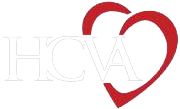Heart failure descibes a condition where the heart is unable to effectively pump blood to the rest of the body. This can lead to swelling, shortness of breath, and fatigue.
There are many reasons why the heart might be too weak to pump blood (i.e. systolic heart failure). The most common causes are:
(1) years and years of uncontrolled high blood pressure (chronic hypertension)
(2) blockages in the heart arteries (coronary artery disease)
There are several tests that may be necessary to diagnose/treat heart failure:
– An electrocardiogram (ECG or EKG) – This test measures the electrical activity in your heart. It can show whether you have an abnormal heartbeat or had a heart attack in the past. These are some of the things that can cause heart failure.
– An echocardiogram – An “echo” is a painless non-invasive imaging test uses ultrasound to visualize the heart chambers, the heart function, and the valve function. From here we can measure the “ejection fraction” or EF which is a marker of heart function.
– A stress test – There are different types of stress test that can be used to indirectly identify major heart artery blockages. Either through exercising on a treadmill or a “chemical” stress test, we can identify if the heart is getting enough blood. Since heart artery blockages can cause heart failure, this test is helpful in trying to evaluate what the cause of heart failure is.
– Cardiac catheterization – Also known as a “heart cath”, this is a minimally invasive procedure to directly visualize the arteries of the heart for any blockages that might lead to heart failure. Special x-ray pictures are taken to identify major blockages.
Treating heart failure is directed at the cause. Medications are usually prescribed to help prevent further loss of heart function and to possibly even improve heart function!
Heart failure patients are sometimes at risk of sudden cardiac death (SCD). SCD most commonly occurs when the heart suddenly goes into an abnormal chaotic heart rhythm (either ventricular fibrillation or ventricular tachycardia, VT) and the heart does not pump blood. If VT occurs, a shock must be administered to the heart to restore a normal heart rhythm. Unfortunately only a small minority of patients receive this shock in time and the survival of SCD is extremely low. The best protection from SCD is a device called an implantable cardioverter defibrillator (ICD). This device is able to detect ventricular fibrillation and ventricular tachycardia and administer a shock to the heart within seconds. For patients, who are at risk for sudden cardiac death, the ICD can be a lifesaving therapy.
Cardiac resynchronization therapy refers to a special type of pacing therapy where the lower heart chambers are stimulated from both the right and left sides. In select patients with heart failure, this therapy may improve the efficiency of the heart leading to improvement in quality of life, delayed progression of congestive heart failure, or even improvement in heart function. Cardiac resynchronization therapy devices are almost always ICDs as well.
Patients with recurrent VT despite medical therapy may benefit from a catheter ablation procedure. During a catheter ablation, electrode-tipped, flexible plastic tubes (called catheters) are inserted into a vein, usually in the groin area. The catheter tips are positioned at different locations inside the heart. Measurements of the heart electrical system’s health can be obtained and abnormal heart rhythms can be studied and mapped. The tip of a catheter can be used to burn or freeze the short circuit causing the heart rhythm disorder. There are no residual scars and patients can usually resume normal activities within 1 week of the procedure.
For more information or to schedule a visit to discuss any of the above information.


